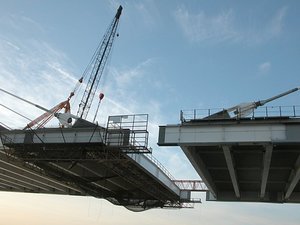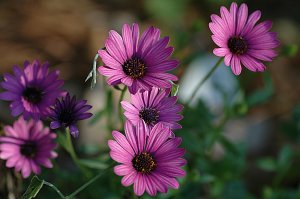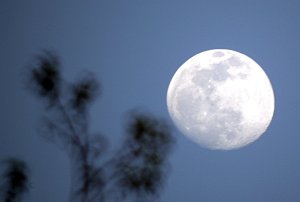The Bridge Blog
A dialog about our new bridge and these web pages
Overview. As a pointy-headed
university professor, my weekend project of bridge photography and
building these web pages generated many questions and introduced me
to just-in-time learning. I enjoy chasing my curiosity and
want to identify ways to encourage younger learners to also enjoy curiosity
chasing and learning.
Learning usually requires repetition while forgetting occurs when
I infrequently use information. Many young learners do not understand
the importance of repetition. Weekly visits to the bridge provided
the repetition necessary to detect changes in the bridge and
consequently generated
many questions and opportunities for learning. Over the course of the
bridge project, I had access to few experts for answering questions.
Rather than a liability, this became an asset and pushed me to improve
my search skills with Google. Soon, I found that answers
to questions encountered during my weekly photo shoots were often
only a Google-search away -
(see
Restoring the Joy in Learning). Consequently Google + Internet became
dependable extensions of my memory.
The bridge story is a work in progress and is evolving from a simple
collections of photographs to an experiment with Internet-centric
just-in-time learning.
Insights I gain from you
will find their way into the learning centers of MUSC.
Palmetto Bridge Constructors, a joint venture between
Tidewater
Skanska and
Flatiron Constructors, as well as
High Steel Structures,
Freyssinet, the
SCDOT and the
Federal Highway Commission Office
of Bridge Technology guided much of my learning.
I also learn from many of you and from Google-linked resources. More
important is the e-mail encouragement I receive from many of you.
Thu, 28 Apr 2005
April 28, 2005: Getting a presentation together
 Looking at the photos from the past 21 months reminds me of how much
change has occurred - in both the bridge construction as well as weather
and light conditions. Typically I
experienced early morning conditions from October to April and then
switched to afternoon photos from November until May. This was primarily
in response to the sun's position (in the morning) relative to the line
connecting my photo
spot with the new Cooper River Bridge. I experienced clear weather, cloudy
weather, fog, rain and nearly hurricane conditions. By and large most of
the details of the photo conditions are long lost memories - a result of
the biologial
forgetting process.
Looking at the photos from the past 21 months reminds me of how much
change has occurred - in both the bridge construction as well as weather
and light conditions. Typically I
experienced early morning conditions from October to April and then
switched to afternoon photos from November until May. This was primarily
in response to the sun's position (in the morning) relative to the line
connecting my photo
spot with the new Cooper River Bridge. I experienced clear weather, cloudy
weather, fog, rain and nearly hurricane conditions. By and large most of
the details of the photo conditions are long lost memories - a result of
the biologial
forgetting process.
Looking at these photos reminds me of the rich variety of viewing conditions
I experienced as well as the development of the bridge.
Organizing them as a time
lapse photo stream seems like an interesting way to view almost 2 years of
fun. I have started with 3 compositions: growing the west span,
growing the east span and reaching for the clouds while closing the gap.
posted at: 08:25 | path: | permanent link to this entry
Sun, 24 Apr 2005
April 24, 2005: Closing the loop
Way back in January, when there was a gap separating the east and west
main spans, I
took a photo of the crane used to lift edge and floor girders from barges
to the deck and then hold them in place while the iron workers attached
the splice plates.
 Here is the "Last Dinosaur Standing" as seen from the old Pearman bridge.
(Click to see
the story about Philip and the Last Dinosaur Standing.)
Yesterday I was taking some photos of the main span paving and two guys
walked up and started talking - they were Philip and Lewis. Philip, I sort
of knew because of email from his mom and wife. I had never met Lewis but
had watched Lewis (and Jack) attach the splice plates that linked the north
side of the east and west edge girders - thus bridging the gap.
Here is the "Last Dinosaur Standing" as seen from the old Pearman bridge.
(Click to see
the story about Philip and the Last Dinosaur Standing.)
Yesterday I was taking some photos of the main span paving and two guys
walked up and started talking - they were Philip and Lewis. Philip, I sort
of knew because of email from his mom and wife. I had never met Lewis but
had watched Lewis (and Jack) attach the splice plates that linked the north
side of the east and west edge girders - thus bridging the gap.
But yesterday was special. I was able to meet both of them, talk a bit and
for me, close the loop from distant observer to acquaintance. This
closes another gap, the people gap, and enables my understanding of the
bridge project at
both the technical level as well as at the people level.
The bridge project has impressed me from the people perspective. I have come
to know many people associated, either locally or remotely, with the building
of the new Cooper River Bridge. First Bill Mankin
from High Steel Structures, then David Wertz (SCDOT) then Wade Watson (PBC)
then Peo Halvarsson (Skanska and PBC), Marvin Tallent (Flatiron and PBC)
and Oliver Forget and his Freyssinet team, Wilbur Poole (PBC)
and on and on the list goes. Everyone has helped me understand some aspect
of our bridge project and has given generously of their time.
Helping me understand different components of bridge building has enabled
me to convey what was happening on the main span and approaches with
both the local Charleston community as well as our Internet community. What
pleases me, from my MUSC perspective,
is the opportunity to share the work product of my
hyperactive curiosity with other members of the MUSC community as well as
young learners outside MUSC (particularly with Jonnell at E. L.
Frierson school (Wadmalaw)) - and illustrate the opportunities Google
provides for building episodes of "just-in-time" learning. All these lessons
help me better understand the
IT infrastructure needs at MUSC that facilitate
the paradigm shift from "just-in-case" learning (that is compromised by
the the biology of the forgetting process)
and "just-in-time" learning (which is much more immune to the forgetting
process). The real winner is MUSC which now, thanks
to my bridge friends, has a rather
unconventional source of new insights into learning in general and
Internet-centric learning in particular.
posted at: 15:31 | path: | permanent link to this entry
Fri, 22 Apr 2005
April 22, 2005: Springtime in Charleston
Yesterday while walking home from MUSC, the sun touched some spring flowers in
a remarkable way. Similarly, last night we had an
almost full moon. So here is springtime in Charleston.
(And I do not yet have a firm date for when the new Cooper River Bridge will
formally open. I shall post it here in our blog when I have a pretty firm date.)


posted at: 10:00 | path: | permanent link to this entry
Thu, 21 Apr 2005
April 21, 2005: Another kind of cable strand
 As you know, I am chasing the question: What is the meaning of life,
the universe and everything - as stated in the Hitchhikers Guide to the
Galaxy. Said another way, is there life after our adventure with the
new Cooper River Bridge?
As you know, I am chasing the question: What is the meaning of life,
the universe and everything - as stated in the Hitchhikers Guide to the
Galaxy. Said another way, is there life after our adventure with the
new Cooper River Bridge?
Yesterday was simply chaos cubed. My primary web server (monitor) died while
I was deleting some old files in order to free up some space. Obviously I
deleted something that should not have been deleted - so from about 1pm until
4pm - my site was dead and I was frantic. Clearly, I needed a distraction.
Last night, Ellen and I had a
quiet dinner and talked a bit about our projects. Now is when baby spiders
start to appear in Charleston, so I went out about 7:30 pm looking for our
evening spiders (
Neoscona hentzi or barn spider).
These little
wonders build their webs in the early evening and destroy them in the early
morning - at least usually. I found a few babies (about 0.5 cm in diameter)
in our garden and tried to take some photos, but the conditions
were not good, a gentle breeze was blowing the spider and web in and out of the
focal plane and I had no tripod.
Knowing that they would still be there in the
morning, I returned about 5:30am, with camera, tripod and chair. To my surprise
one was rebuilding her web instead of unbuilding it. I set up the camera,
found a good focus and with a flashlight to illuminate her, started taking
photos. I got lucky and one photo showed her with a silk strand extending
from her spinneret. Just like
Freyssinet unwinding strands
from a big spool of cable,
these little wonders synthesize and extrude silk from a
spinneret and build strands in an as
yet unknown manner. So above is a photo of her, extruding a silk strand
and her weaving. I am accumulating these images and a story which
are available here. Earlier photos
of a (large) adult
Neoscona hentzi are here. And
all of my spider (and underwater) photos can be found
here.
Meanwhile,
I have sent email to the Boston company that was awarded the contract to
remove the old bridges - but so far, no reply but I am cautiously optimistic.
No matter what, I plan to take a routine data set each week starting whenever.
posted at: 17:21 | path: | permanent link to this entry
Tue, 19 Apr 2005
April 19, 2005: What to do next?
Now that the two main spans have been joined and the two tower cranes have
been disassembled very little change is visible from the S.C. Aquarium
and from my bicycle as I ride
across the old bridge. So continuing my weekly set of standard photos
will bring us little new
data. The work on the East Bay on ramp continues and I shall continue
to track this. But I am rapidly running out of ideas. So, if you have
a burning question, now is the time to add your input into our bridge
project. Send me email with your ideas.
And another request. I am thinking about building a photo exhibit selected from
the 6000+ photos I have taken over the past 18 months. The idea is to
provide something interesting from an art perspective as well as an
opportunity to see some of the temporal changes in major bridge features. The
question again is what is interesting for all of you? I have thought about
the following topics:
- Monthly view of the two pylons and closing the gap. I have photos from
August 2003 until now capturing most of this.
- Building the east approach (as seen from my bicycle rides)
- Building the east deck
- Building the west deck
- Building the west approach
- Building a stay cable (Freyssinet)
- Images that just happened - mostly photos that show aspects of the bridge
in different light.
Lee, at
Duncan and Parnell
here in Charleston, can make large (4 ft. x
whatever length) inkjet prints of image compositions. Lee has helped me with
some test prints showing the time sequence of closing the gap on a textured
paper that really brings the images to life. Exploring the presentation
in this manner has challenged me - how to make this something other than a
group of plain jane photos. Using textured paper amd organizing multiple
images on the same paper brings something new to this presentation.
I have also had
Shutterfly print some test
images in a large format: 11x14 and 16x20. Both sizes are amazing and there
is no observable evidence that indicates the digital nature (5 megapixel)
of the images. For me, this was a big surprise.
So again - any ideas about the topics and image composition of such an
exhibition that would make it interesting for you?
What would grab your attention and attract you for a closer look? Again
send me email with your ideas. I shall make an additional tab on the top
menu bar of our bridge web pages so that you can see what I am thinking and
display your suggestions.
Thanks.
posted at: 05:58 | path:
|
permanent link to this entry
Wed, 13 Apr 2005
April 13, 2005: A bit of history
 John Baxley, an aerial photographer from Springfield, SC, has found
a bit of Cooper River Bridge history.
Almost every visit I make to the new bridge
coincides with a cargo ship or tanker sliding along the Cooper River and
under the bridge. During the transition from a web site for my grandchildren
to what it is today, I remember reading some discussion
about the islands that were built at the base of the east and west pylons.
Specifically, these islands were designed to be sufficiently large in diameter
to prevent a ship from colliding with the pylon.
John Baxley, an aerial photographer from Springfield, SC, has found
a bit of Cooper River Bridge history.
Almost every visit I make to the new bridge
coincides with a cargo ship or tanker sliding along the Cooper River and
under the bridge. During the transition from a web site for my grandchildren
to what it is today, I remember reading some discussion
about the islands that were built at the base of the east and west pylons.
Specifically, these islands were designed to be sufficiently large in diameter
to prevent a ship from colliding with the pylon.
As a relatively newcomer to Charleston (we moved from Chapel Hill in 1998),
I am not aware of much of the history and stories surrounding the older
members of the Cooper River Bridge family. Many of you have told me
stories of family experiences with the bridge that bring a personal touch
to my understanding. However, thinking about the earlier lives of the
Cooper River Bridges never clicked
until John sent me this photo of a collision
in 1946. Clearly, historical information is as important to our web project
as today's images. Another nice contribution to our project. Thanks, John.
And a P.S. Tim Linder frequently contributes to our project and dramatically
improved the quality of the original image. Thanks to you also, Tim.
Another P.S. - Jim Bogle from Columbia remembers the story of the
collision of the Nicaragua Victory and the Grace Bridge as told by
his parents. According to him, the Army rigged a Bailey Bridge until repairs
could be done. The opportunities for walking across the Grace Bridge
as I build the story of the
Unbuilding of the Grace and Pearman Bridges are rapidly disappearing. With
input from Jim and John - I shall be much more attentive to the Grace
structure and see if there are any residual signs of the collision.
posted at: 11:24 | path: | permanent link to this entry
Fri, 01 Apr 2005
April 1, 2005: A new project
 Tim Linder has a great idea. What about collecting aerial and satellite
images acquired during the construction of the new Cooper River Bridge.
We found this image from the US Geological Survey (1999).
In addition, the
US Geological Survey has a very useful image browser. This link includes
southern South Carolina.
Terraserver.com has a more
recent (October 13, 2003) photo from GlobeXplorer at coordinates:
Latitude: 32.8070077 , Longitude: -79.927839 .
Tim Linder has a great idea. What about collecting aerial and satellite
images acquired during the construction of the new Cooper River Bridge.
We found this image from the US Geological Survey (1999).
In addition, the
US Geological Survey has a very useful image browser. This link includes
southern South Carolina.
Terraserver.com has a more
recent (October 13, 2003) photo from GlobeXplorer at coordinates:
Latitude: 32.8070077 , Longitude: -79.927839 .
Terraserver (support@terraserver.com) readily gave me permission to use their 2 meter
(Oct 13, 2003)
resolution image of the construction site. In addition, I found imagery at
NASA's Gateway to Astronaut Photogrphay of
Earth.
I have sent email to
Spot Image in France, another source of satellite imagery.
My experience is that "front" doors
sometimes don't work as well as some "back" doors. So if any of you have some back door
contacts with satellite imagery groups -
send me
email with your information. I shall build a new page
of
satellite imagery with what we are able to locate. Thanks
posted at: 23:55 | path: | permanent link to this entry